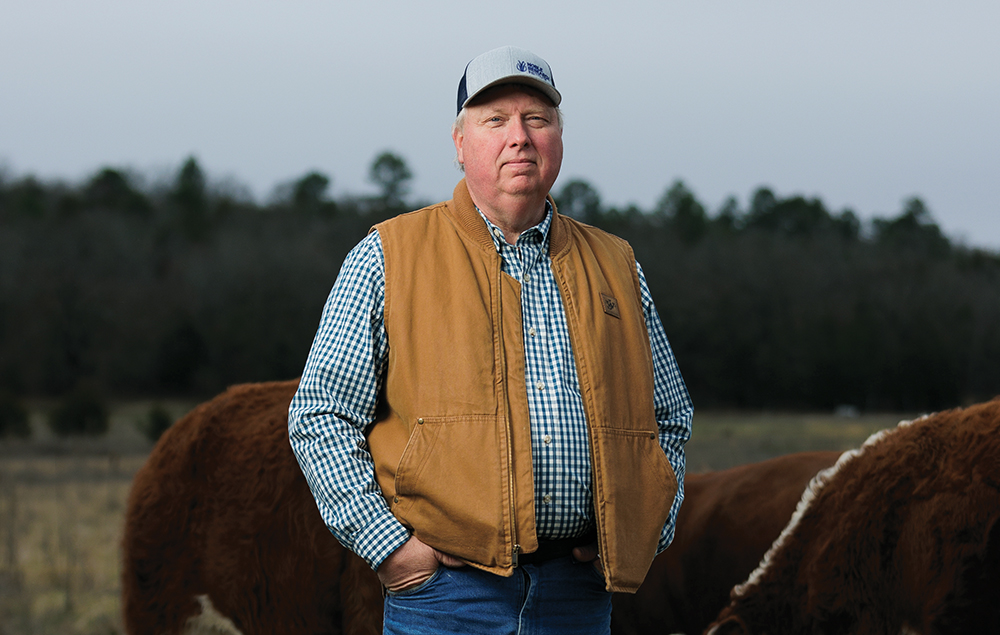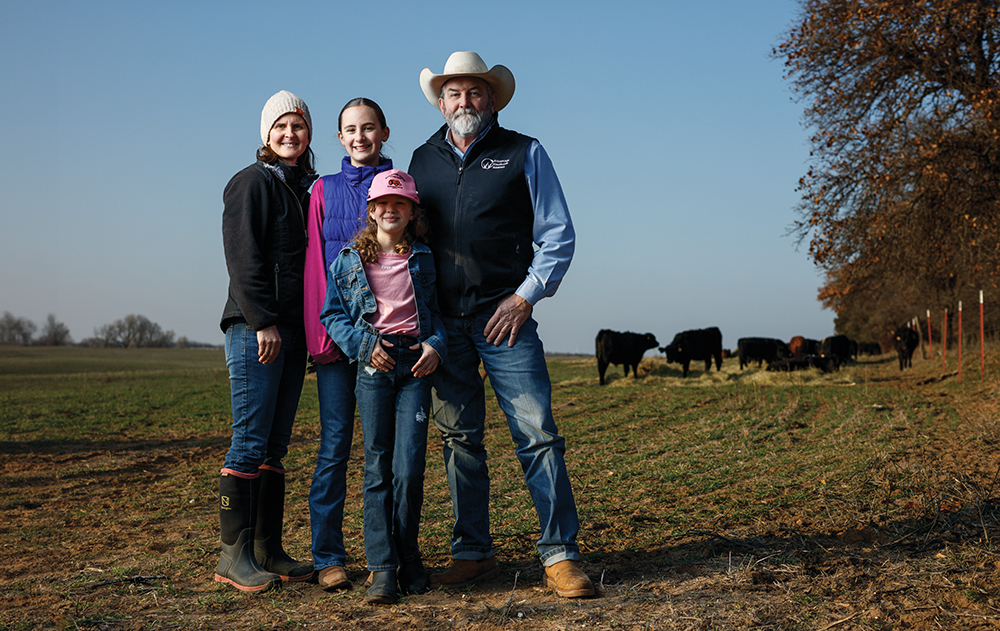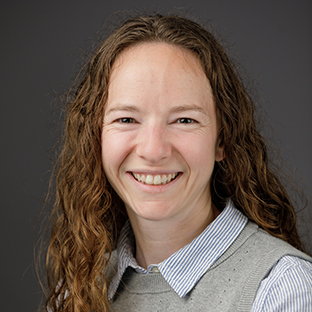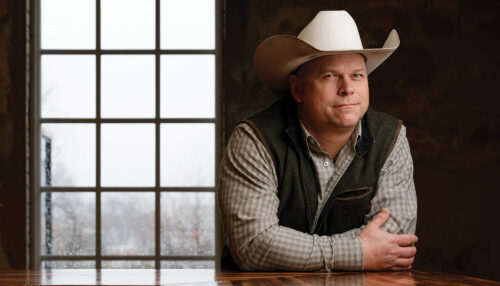Regenerative Ranching: Are We There Yet?
Three ranchers' stories about the journey – not the destination – of regenerative ranching.
Ashley Licking – Guide Rock, Nebraska
Ashley Licking describes herself as a fifth-generation farmer and a second-generation rancher. Before she was born, her father added a herd of cattle to the family farm. By the time she was 14, she owned her first cows.
Licking says she can’t imagine any other life for herself. After graduating from the University of Nebraska with a degree in animal science, Licking returned home this past December to begin the process of taking over the ranching side of the business.
“I have my own herd of 10 or 12 cattle I bought over the years,” she says. “Now that I’m back home, I’ll start purchasing the large herd from my dad and managing it.”
Licking’s management goals still need to align with her family’s farming schedule. But she’s eager to build on what her family has done to promote soil health and conservation of the land.
About three-quarters of the farm’s acreage is cropland for corn and soybeans. For as long as Licking can remember, her dad planted cover crops in the fall, winter-grazed corn stubble and then grazed the cover crops in the spring. The remaining acreage is dedicated to pastureland.
“Here in south central Nebraska, it’s kind of hilly and mostly introduced grass out there,” she says. “We rotationally graze our pastures to maximize the forage value and our cattle’s growth.”
A legacy of conservation
As Licking gets her start in ranching, she is interested in what she can do to improve soil health in her pastures. An interest in conservation runs in her family.
“My grandpa was the first person in our area who stopped tilling his soil. I don’t remember how he learned about it, but he stopped tilling,” she says. “Of course, he got a lot of grief about that, because everyone around us tills their soil, but he instantly saw profits from it. He saw that the soil held together better, held nutrients better, and the crops just performed better.”
As a child, Licking recalls her dad using a moisture meter to check soil moisture levels. She was surprised to see that after three weeks without rain, the untilled soil retained considerable moisture.
“I remember watching my dad and thinking it was interesting that so much moisture can be held underground.”
Licking doesn’t yet know all the science behind why no-till and cover crops are good for the soil, but she aims to learn. She’s attended field days and webinars but wants to dive deeper into how she can be doing more for her soil and her pastures. As she gets started managing grazing on her farm, she wants to answer big questions.
“I’d be really interested to learn what cover crops are best, specifically for where we farm.” Licking says. “I’m eager to learn why what we do works and continue it. But I don’t want to ever just settle for what my dad or my grandpa thought was good enough. I want to continue to learn how I can make a better impact on our soil and the cattle and then educate other people too.”

Paul Bush – Fort Smith, Arkansas
For more than two decades, Paul Bush has tended livestock and land as a way to release stress and keep in shape, he says. Farming is what occupies his time and mind outside of his 9-to-5 job.
Bush’s farm in Fort Smith, Arkansas, is a mix of cattle and sheep raised on grass and sold to friends and neighbors. Through most of Bush’s farming career, he raised crops and cattle conventionally, but three years ago he felt like there had to be a better way for him.
“I had to pay a guy two-for-one to cut my hay,” Bush says, recalling his lightbulb moment. “The guy drove off with 50 of my 75 bales, and I thought, ‘Wow, what did I just do?’”
On Bush’s small-scale operation, investing in hay-making equipment to bale pastures himself didn’t make sense. Then, another option began to take root within him. Bush learned about the University of Arkansas’ 300 Days Grazing program a few years before. Neighbors and other farmers dismissed the idea of a grazing season that long as theory, but not a reality in their region.
“Then I met a fella at the feed store who was a former county extension agent,” he says. “He said he had to un-learn everything from his career. He encouraged me to watch videos from Gabe Brown.” At the same time, Bush was introduced to Noble Research Institute on social media. Both resources were game changers.
Bush watched the videos from Brown’s Ranch in North Dakota and from Noble, and was convinced regenerative management would help his farm.
“The first thing I did was plant a batch of 12 different seeds to break away from just bermudagrass,” he says. “I wanted to break the monoculture, improve mycorrhizal fungi and try other new ideas I had learned.”
He waited and hoped. But his dreams were dashed by the weather that year.
“That seed was a total flop, because it didn’t rain for weeks after I planted it,” Bush says. Even so, he was not put off his new direction. He returned with persistence.
“The second year, I planted a mix and let it grow to maturity. That pasture was improved radically. I decreased the woolly croton and the broomsedge,” says Bush. “Because of letting it grow and shading out the weeds, you can already see what’s different about that pasture.”
His successful second attempt brought about enough visible change to renew his motivation. His neighbors, however, only noticed unkempt fields that they thought needed to be mowed.
“The back of my farm is on the state highway so people see it, and if they pay attention, they’ll ask, ‘Are you ever going to eat that grass?’ or ‘Why don’t you cut it?’,” says Bush. “I mean, I have a couple of people just begging me to cut the property. But I just say ‘No, that will be for the cows in the winter.’”
Over time, Bush has worked toward a few specific changes to his farm. He wants to reduce or eliminate his reliance on hay for his livestock and the need to spray herbicides.
“Today I’m going to winter with far less hay than before. I’m still cautious about it and I still have a backup. But it’s much less than I used to carry,” says Bush. “My goal now is, other than the fence lines and a few really noxious weeds, to never spray it again.”
He’s learned that the transition on his farm under this management style will take time.
“There’s still a way to go on the pasture,” he says. “But I see the good spots getting better, and the bad spots getting good. So, it’s just an ongoing process. You’re never done.”
Bush attributes his success so far to patience, an open mind and good mentors.
“I was blessed to find those people that have been resources for me. There’s more people out there than you realize.”
Willing to try and fail
“One of the biggest things in a regenerative mindset is the ability to fail,” says Bush, a concept he first softened to during a course at Noble. “One thing I really appreciate about Noble is their encouragement to just do something. You’re not going to turn it around in a day. But encouraging the ability to try, over and over, asking, what works and what doesn’t work?”
Attending Noble classes has given him useful resources, he says, including a network of support, practical solutions, and confidence that regenerative farming is the right way to move forward on his farm.
Bush is in the throes of transition now. He’s a few years in, and yet several years from achieving his goals. Although he’s not seeing big financial benefits yet, he’s excited about the benefits in other areas and is optimistic for the future.
“Not everything worthwhile hits your pocketbook,” he says. Bush looks forward to sharing his passion for farming with his grandsons, who he hopes will enjoy spending time in the pastures and caring for livestock as much as he does.
“I see it as an investment, not just in the quality of my soil. I have improved the quality of my food source; I’ve increased the value of my land; and I hope I’m creating a legacy.”

Annette & Mark Thomas – Enid, Oklahoma
Twelve years ago, when Mark and Annette Thomas bought two quarter-sections of land in northwest Oklahoma to start their ranch, they are sure they raised some eyebrows. Most families who farm and ranch in the region have ties that run generations deep. The Thomases introduced a new last name to the area and brought with them a different philosophy on land management.
“We’ve been here 12 years, and people know us, and I think some of them are opening up to what we’re doing, even if it doesn’t fit their operation,” says Annette.
Initially, it was simply choosing to use no-till planting methods. But over time, the couple introduced multi-species cover crops, rotational grazing and biological-based fertilizers.
The Thomases have always practiced no-till planting to protect the arid, sandy topsoil. But in 2015, they felt the need to make bigger changes when the cattle market sank. The couple switched from a conventional cow-calf operation to a birth-to-finish grass-fed beef operation, as Mark refers to it.
“We moved away from trying to make a cash crop, realizing that direct marketing the beef we were producing was the most valuable cash crop for us,” he explains. Instead of planting and harvesting crops, the couple planted more cover-crop mixes to graze on their crop ground and started no-till interseeding more of their permanent pastures for year-round high-quality forage.
To satisfy their growing grass-finished beef sales, the couple expanded their grazeable acres and enhanced rotational grazing opportunities with additional fencing and solar water systems.
Mark works off the farm marketing grass and forage seeds. At a tradeshow he attended for work, he heard an entomologist present about the impact chemicals have on soil health and the insects, worms and microbes that live in or around soil. It was Mark’s first “ah-ha” moment for transitioning their farm toward a regenerative approach.
“I came back and told Annette that those dewormers and synthetics that are going into our cattle end up in our soil and they’re impacting the dung beetles,” he recalls. “Because at that time, we didn’t have dung beetles on our ranch.”
Dung beetles are considered a keystone species, an essential part of an ecosystem whose presence or absence affects many other parts of the ecosystem’s health. The couple consulted with their veterinarian and switched to a dewormer that was classified as safer to use around dung beetles. Ultimately, they opted to end mass-deworming their herd.
“Because of our rotational grazing schedule, we didn’t need to deworm everything once or twice a year,” says Mark. “Then, all of a sudden, the dung beetles are showing up and breaking down manure pads within six to 12 hours.”
That was the Thomases’ second lightbulb moment. The return of dung beetles to their ranch motivated them to continue prioritizing the six soil health principles across their land.
“Now our goal is to reduce chemical inputs, our chemical disturbance, and we try to use as many biologicals as we can instead,” says Annette. “We’ve gotten into using humic acid, fulvic acid, making compost tea or compost extracts, sea kelp, sea minerals, molasses, those types of things.”
Having guides makes a difference
Annette knows how some of these things sound to the conventional agriculture community. She jokingly calls this new frontier of inputs the “wild west,” as there is a bit of trial and error involved. However, the Thomases have an experienced guide to lead them through their transition, and it’s made all the difference to them.
“Jimmy Emmons has been a great mentor to us. He lives and ranches out in this part of the country, so he has similar environmental situations and has helped us greatly,” says Mark.
Emmons is the senior vice president of Trust in Food’s Climate-Smart Programs and the owner of Emmons Farms in Leedey, Oklahoma. He’s also a generous mentor to farmers and ranchers like the Thomases. Emmons talks Mark and Annette through challenges and connects them with resources.
Mark describes Emmons as someone who helped them take their ranch to the next level, soil health-wise.
“Annette has a master’s degree in ruminant nutrition, and when Jimmy explained the microbiome of the soil, we understood the importance of the soil microbiome to forage health as the rumen microbiome to cattle health,” says Mark.
When the Thomases stepped back and looked at their ranch as a whole, the interconnection of soil, forage and cattle health became clearer. Their first instinct to practice no-till was helpful, but not enough to return life to their soil.
“No-till is just one of the principles, but it just can’t be used by itself,” says Mark. “I think one of the challenges when people move toward regenerative practices is remembering that we’re trying to undo generations of practices that depleted the soil and made it more dependent on synthetic inputs, and that takes time.”
Patience and tenacity are the hallmarks of the Thomases’ success after seven years of practicing regenerative management on their ranch. There have been setbacks, like the time they planted cover crops on leased pasture and decided to stop driving past it to check on progress because the seed hadn’t taken hold.
“It can be honestly kind of depressing,” recalls Annette. “But then we went back later in the summer, and there was a lot of life out there. There were forages, and when we got a rain, the soil absorbed it. It’s really bounced back, but that took three years of just continuing those practices even when it didn’t seem like much was happening.”
A reminder that even when crops fail, you may still be making progress in soil health. But there’s an upper limit to tenacity on a ranch because it is a financial commitment. Knowing when to hit the pause button on a project or section of land is also part of the Thomases’ strategy to keep the transition within their budget and learn to make it to the next good growing season.
Comment
Leave a Reply
2 comment on: "Regenerative Ranching: Are We There Yet?""



Rodney Boerjan
July 29, 2025Very interesting information. Paul Bush is my neighbor. I remember him telling me a few years back about this type of pasture management. I’m one of the people who thought he’s lost a few marbles. Now I see the benefits of his work. That pasture he talks about on the main highway, he is not kidding. It has grass tall enough you can’t see most of the calves. I’m going to look more into this and work more towards a goal of not having to feed so much hay during winter months.
Taner, Noble Research Institute
August 1, 2025Awesome to hear you’re looking into regenerative practices! Breaking up the monoculture, like Paul did, is a great step toward extending your grazing season and cutting down on hay costs. Feel free to give us a call if there is anything we can help with.